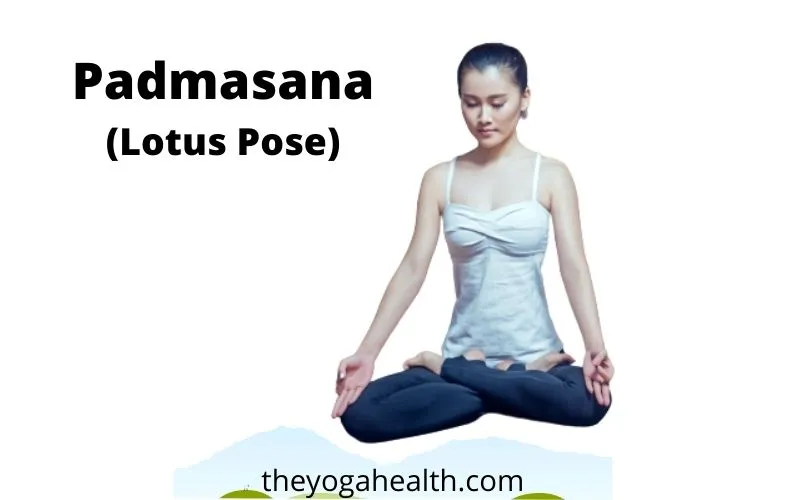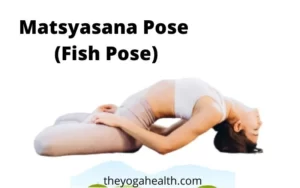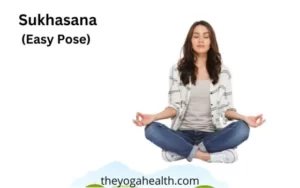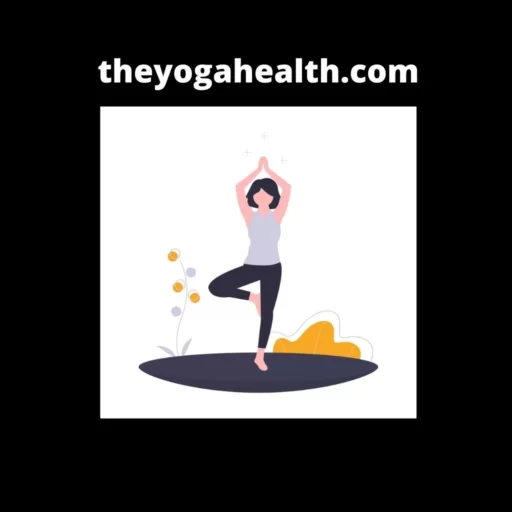Padmasana (Lotus Pose) is the best basic pose for energizing the Yoga practitioner. As the lotus grows in mud and blooms into a beautiful flower, so does the practitioner of this pose. Whoever regularly practices Padmasana gets transformed into a beautiful human being.
In the Hindu tradition, lotus is associated with many powerful deities like Ganesha, Vishnu, and Lakshmi. The goddess of wealth Lakshmi and Bhagwan Vishnu are often shown sitting on a big open lotus flower.
Table of Contents
Lotus Pose (Padmasana)
‘Padma’ in the Sanskrit language means a ‘lotus’. Padmasana is one of the most important and useful asanas described in Yoga texts.
Padmasana is a posture for meditation. You will find Lord Buddha sitting in this posture in most of his statues.
This posture is described in detail in the first chapter of the ‘Hatha Yoga Pradipika’ as under:
“Assuming Padmasana and placing your Palms one upon other, fix your chin firmly upon your breast bone and meditate on Brahman. Now frequently contract your anus and raise the ‘Apana Vayu’; similarly contracting the throat and forcing the ‘Prana Vayu’ down.
Awakens Kundalini
By doing Padmasana, one can obtain unequal knowledge through the ‘kundalini’ which can be roused by this process”.
Kundalini is described as the Divine Cosmic Energy in our body. It is also known as the coiled sleeping serpent in the lower body at the base of the spinal code.
This divine energy can be awakened and made to move up the spine towards the brain through ‘Susumna Nadi’
Susumna Nadi is described as a channel through which the energy of nerves passes through the six chakras and awakens the kundalini.
The awakening of the kundalini is discussed in detail in the book titled ‘The serpent power’ written by Sir John Woodroffe.
This basic posture of hatha yoga is often used in various yoga pose variations particularly Sirsasana and Sarvangasana.
The Lotus Pose basic details:
| Sanskrit Name | Padmasana |
| English Name | Lotus Pose |
| Position | Sitting |
| Difficulty Level | Intermediate |
Lotus Pose benefits the following muscles:
- Feet
- Ankles
- Knees
- Hips
How to do a Lotus pose:
1. Sit on the floor, legs straight in front of you.
2. Now bend your right leg at your knee, hold your right foot with your hands. Now place your right foot at the root of your left thigh. The right heel should be near the navel.
3. Now bend your left leg at the knee and hold your left foot with your hand.
4. Now place your left foot at the root of your right leg, heel near the naval.
5. The soles of your feet should be turned up. This is a Lotus Pose.
6. Change your leg position by first placing the left foot over your right thigh and your right foot over your left thigh. This will help to evenly develop your both legs.
Lotus Pose Precautions:
1. People, who do not sit on the floor, very rarely have flexible knees. In the beginning, the practitioner will feel pain around his knees when he starts with Lotus pose.
2. By regular practice the pain will slowly go away and then the practitioner can sit in this pose comfortably for a long time.
3. While doing Lotus pose the spine should remain erect.
4. The arms can be stretched out, keeping the left hand on the left knee and the right hand on the right knee.
5. Your forefingers and thumbs should be bent and touch each other.
6. Hands can also be placed in the middle where feet cross each other, keeping one palm upon the other.
Lotus Pose (Padmasana) Benefits :
1. After the initial knee pain is over, this asana is one of the most relaxing poses. The body in a sitting posture is at rest without being sloppy.
2. The position of cross legs in this asana and the erect back keep your mind attentive and alert.
3. This is the best pose for practicing Pranayama.
4. This is an excellent pose for curing stiffness in the knees and ankles of the practitioner.
5. In this pose the blood is made to circulate properly in the lumbar area and abdomen.
6. Sitting in in this asana strengthen and tone up the spine and abdominal organs.
7. This is a wonderful asana for opening hip joints.
8. Knees and thighs become much stronger and more flexible with regular practice of this asana.
9. Helps in keeping the body steady for long periods.
10. The regular practice of this asana also keeps the mind steady and stable.
11. Digestion becomes proper.
12. This asana reduces menstrual discomforts for women and is also helpful to pregnant women during childbirth.
Lotus Pose Yoga Contraindications:
- If you are suffering from any knee injury then it is better to avoid this asana till the injury is fully cured.
- If there is any problem related to sciatica, then also this asana can be avoided.
- Do not do this asana if there is any injury in the ankle or calf.
- In case of any ailment of the spine or back, this asana can be avoided.
Lotus Pose Variations:
Following are the few Lotus Pose Variations that you can try:
1. Ardh Padmasana (Half Lotus Pose)

Doing Padmasana (Lotus Pose) is a difficult asana for most people who are new to yoga poses. It is always advisable to start with Half Lotus Pose.
Ardh Padmasana Steps:
1. Sit on the Yoga mat with your legs straight in front of you. Now bend your right leg at your knee and hold your right foot with both hands and place it at the root of your left thigh. The back of your right heel should be touching your naval.
2. Now bend your left leg at your knee and place it under your right thigh.
3. You can hold this position for about half a minute and then you can interchange your feet by placing your left foot at the root of your right thigh and bending your right leg at your knee and placing it under your left thigh.
4. Regular practice of Half Lotus Pose will prepare your body for full padmasana. As you are comfortable with this pose you can attempt to do the full padmasana.
2. Urdhva Padmasana in Sirsasana

‘Urdhva’ in the Sanskrit language means ‘above’ or ‘high’. In this variation, Padmasana is performed in Sirsasana (Head Stand).
Urdhva Padmasana in Sirsasana Steps:
1. First perform Sirsasana as described in the link.
2. Now place your left foot over the right thigh and your right foot over the left thigh.
3. Press your knees closer to each other and stretch your thighs vertically up.
4. You can remain in this pose for about 30 seconds with deep breathing.
5. After that you breathe out and extend your thighs as far back as you can.
6. Now uncross your legs and come back to Sirsasana. Now cross your legs the other way around. Place your right foot over the left thigh and your left foot over your right thigh.
7. Hold this position for about 30 seconds and then extend your thighs back as for as possible.
8. Do not change the position of your head or your neck while stretching your thighs up.
Urdhva Padmasana in Sirsasana Benefits:
Apart from all the benefits of Sirsasana and padmasana, this asana gives an extra stretch to the dorsal area, pelvic area, and ribs. Which expands the chest fully and circulation of blood in the pelvic area becomes proper.
3. Urdhva Padmasana in Sarvangasana

In this Sarvangasana variation, the legs from being kept straight up are bent at the knees. As in the lotus pose, the left foot is kept on the right thigh and the right foot is kept on the left thigh while doing Sarvangasana.
Urdhva Padmasana in Sarvangasana Steps:
1. First do Salamba Sarvangasana as described in the link and bend your legs at the knees and cross them. Place your left foot over your right thigh and your right foot over your left thigh.
2. Now stretch your crossed legs vertically up and bring your knees closer to each other.
3. You can hold this pose for about half a minute with deep breathing.
Conclusion:
Although Lotus pose is a challenging pose, but for all its benefits it will be best for the Yoga practitioners to learn this pose as early as possible. Apart from all other physical benefits, this asana is great for practicing ‘Mudras’.
When sitting in Padmasana one can deepen his meditation by including either Chind Mudra, Chinmayi Mudra, Adi Mudra, or Bhrama Mudra. These Mudras are wonderful ways to regulate the flow of energy in the body.
FAQ: Padmasana
Q1. Why is Padmasana difficult?
Ans: Padmasana is a sitting pose and the majority of people these days have forgotten to sit on the floor that’s why the majority of them rarely have flexible knees.
Without first having flexible knees, thighs and hips this asana will be difficult to perform.
Q2. How to sit in Padmasana for beginners?
Ans: If full Padmasana is difficult to perform by practitioner then it is always advisable to start with ‘Ardh Padmasana ‘ (Half Lotus Pose).
The step-by-step technique for doing the ‘Ardh Padmasana ‘ (Half Lotus Pose) is described above in the article.
Q3. Why is Padmasana important?
Ans: Padmasana or Half Lotus Pose is a very important basic sitting Pose described in the Hatha Yoga texts.
It helps in deepening meditation by calming the mind and body apart from helping in various physical ailments when a person practices this pose regularly.
Q4. Is Lotus pose bad for your knees?
Ans: If a person is already suffering from any Knee injury or is having weak knees then it is advisable not to go for Lotus Pose.
If still a person wants to learn it then he must do it under the guidance of a qualified Yoga teacher.
Others who do not have any knee problems can perform this pose without any fear cause regular practice of this pose will only tone up and strengthen their knees.
Share your experience of doing Padmasana and let us know if you have any questions regarding Padmasana (Lotus Pose).





